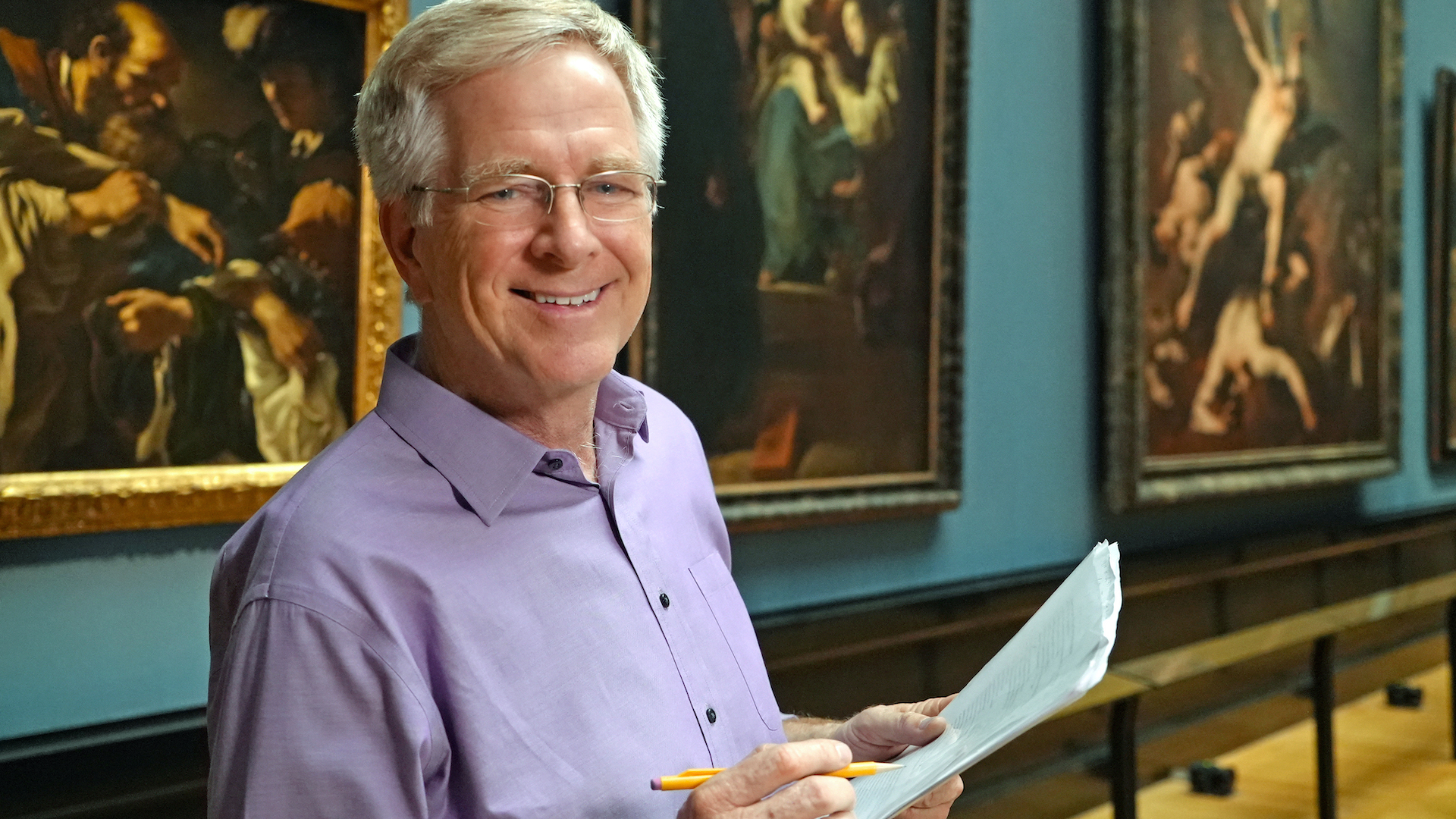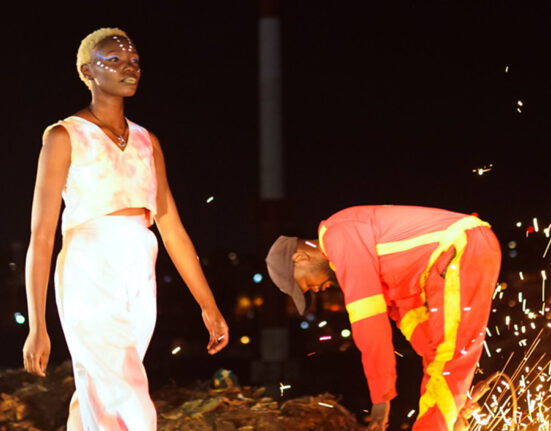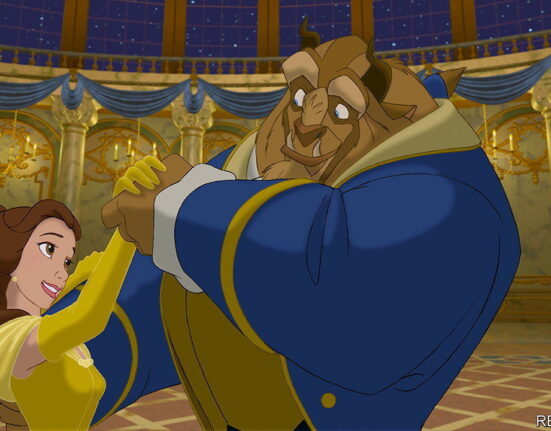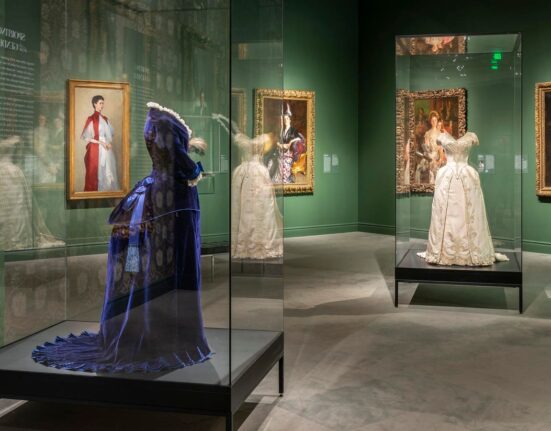Does it feel like everyone you know just took a vacation? As we navigate our way through the COVID-19 pandemic, more and more of us are starting to travel again. Maybe you have a trip to Europe planned? Or, maybe you are still staying home, or closer to home. Either way, Rick Steves’ new travel series, Art of Europe will have something for you.
Whether you are preparing to visit one of Europe’s great museums or you want to experience the best of European art from the comfort of your living room, fans of Rick Steves’ Europe won’t want to miss his new six-part series, Art of Europe. The series, premiering Monday, October 3, at 10:00 p.m., traces European art from cave paintings and mysterious stone circles through the rise and fall of great ancient civilizations, and the influential periods of the Middle Ages, the Renaissance and the Enlightenment. Through it all, new artistic styles emerged: stern Neoclassicism, unbridled Romanticism and sun dappled Impressionism.
Celebrate the exuberance and joy of European art, connecting audiences to the past while simultaneously pointing the way forward. Led by our favorite travel host, Art of Europe strives to make art history fun (more on that later). The series delivers the appreciation of good living and the respect for place Steves has presented to KCTS 9 viewers for decades.
Ahead of the premiere, Steves chatted with KCTS 9 about making art history engaging, the classic painting he would hang on his wall and more. Here’s what he had to say.
Are there any pieces of art that you are excited to share with viewers?
For me, it’s so exciting to take any great piece of art and explain to people why it matters … Like Sainte-Chapelle in Paris. You walk up this dark, spiral staircase and then you step into the most gloriously lit space, the most beautiful space I think in medieval Europe. It was the king of France’s chapel where he kept the crown of thorns. It was a time when relics were really important. If you have the crown of thorns, that was the ultimate relic, you wanted to build a place that was suitable for this. It’s just a lantern of beautiful stained glass light. It’s just an avalanche of color. And all of this sunshine that pours through the windows is illuminating different Bible stories. It all supports the importance of the crown of thorns and it reminds people that their king was divinely ordained to rule. That means you’ve got to obey him.
So, for us to go to that spot in Paris, on the island in the middle of the Seine, is kind of obvious. People line up and they pay good money to see it. But, to go there and to be able to put yourself back 800 years and to understand the importance of that. That’s our challenge. That’s what we try to do in our series …
The Renaissance was stepping out of medieval darkness and it was the celebration of humanism. That was 500 years ago. To see Michelangelo’s David, you are looking at a bold, new human being here. This is Renaissance man, this is sizing up the giant, according to the Bible. I think the metaphor is sizing up the challenge of breaking out of medieval chains and freeing yourself to recognize that God gives us skills. And now the best way to glorify God is not to bow down in church all day long, but to recognize those skills and use them and make the world a better place.
If you can look at Michelangelo’s David and understand what it meant to people 500 years ago, it just becomes a thrilling experience. And it symbolizes a great age and it also symbolizes the beginning of the modern age … Michelangelo captures David at that moment when he’s sizing up the giant and he’s thinking, “I can take him.” And, David is just a little shepherd boy and he’s got this brute in front of him but, of course, David’s right hand is big and overdeveloped and it symbolizes the Hand of God. And the Hand of God is encouraging humankind to step forward and to grapple with problems and find out why you’re here. It’s sort of a declaration of independence.
To see that and to understand it, it’s exciting. It’s also, conversely, sort of tragic to go all the way there and not understand it. So we have six hours in this series to take the story of European art from cave paintings, 10 or 20 thousand years before Christ, right up to street art today … It lets us celebrate how much we’ve progressed and it also makes it really clear how much more we can do.
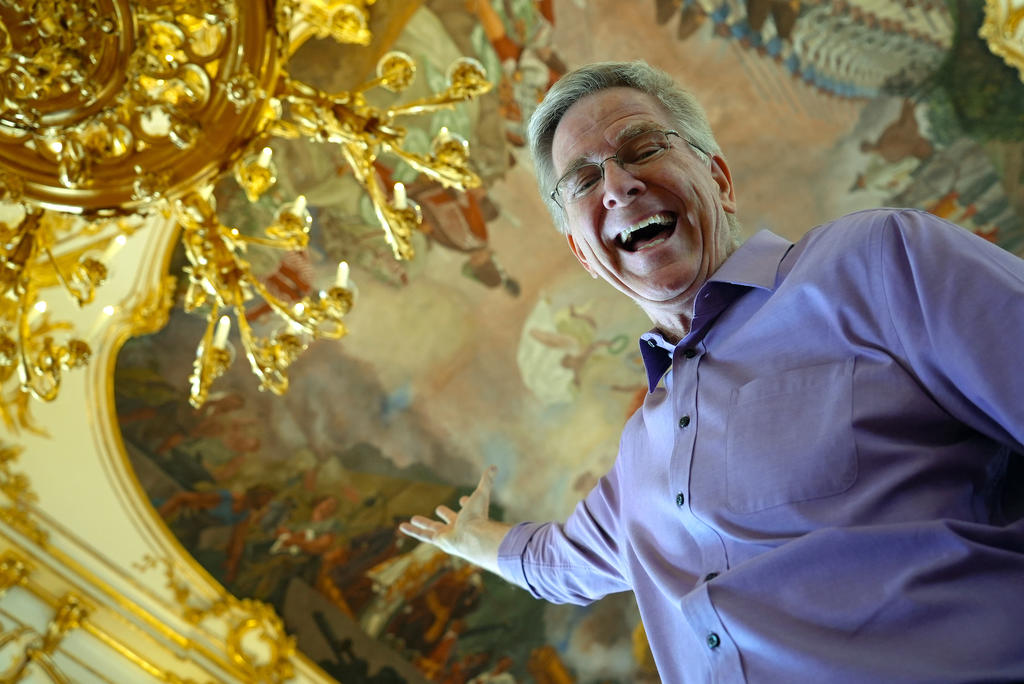
How do you go about making art history fun?
What I did in the TV show is take the tricks that I use as a tour guide and put them into the TV show. So in a sense, I’m a tour guide and everybody’s traveling with me.
Before you step into a Gothic cathedral, you should understand what Gothic is. Gothic is creating a skeleton of support so the walls don’t have to hold up the roof, so the walls can just be window holders so you have more light in the church, and that’s a beautiful thing. And it’s all about a pointed arch.
If you have a round arch, the stone weight of the roof sits squarely on the walls, you need fat walls and little windows to hold up the roof. If you point the arches — that’s the fundamental difference between Romanesque and Gothic. Romanesque are dark, fortress-like churches and Gothic are graceful churches filled with light. You point the arches up and the weight of the stone roof doesn’t go down, but it goes out. So, you support the church not by making fatter walls but by having buttresses supporting columns and that lets you have all of this space for the walls to become window holders, with glorious stained glass. So how do you make that work for people?
Well, we build a Gothic cathedral out of 13 tourists. It takes six columns, six buttresses and one spire. So I get to set up the columns. Call out the buttresses. (Remind the buttresses that if you fly in with your support you will have more space for the walls, so you become flying buttresses.) I remind the columns that when their arms come together up on top, four arms come together, those are ribs architecturally. If they’re round, you’re gonna be Romanesque. You wanna be pointed, so you can be Gothic.
You got your buttresses supporting the columns. Then, when you have the spire put her hands on top of those ribs coming together and she hoists herself up above your skeleton support, you’ve got that spire standing tall. You’ve got the weight of the spire pushing out not down. You’ve got the area between your columns filled with glass. And, you have created the triumph of Gothic.
We build a Gothic cathedral out of people and then we step into a Gothic church and you realize, “Oh, now I get it.” So we did that with our TV show. It was a fun thing to film. And then we stepped into a Gothic church. I think people get their brains around it better. That’s one little example of how you make art fun and more meaningful.
That’s great. It sounds so fun.
If you’re having a party and it’s just not clicking, say, “Let’s build a Gothic cathedral.” [Laughter]
It’s a good party trick … Is there any great work of art that you wish you could bring home with you?
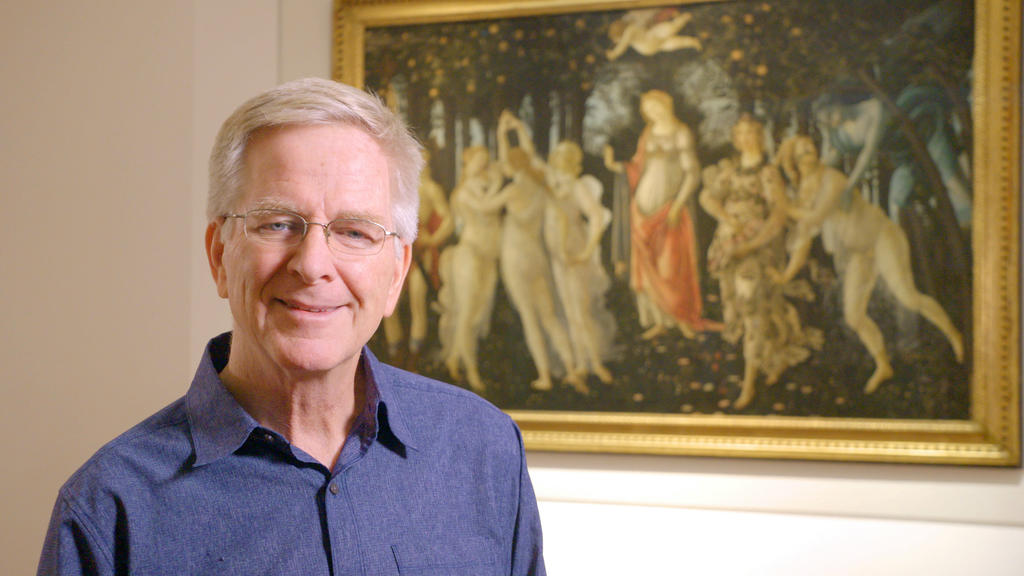
[Botticelli’s] “Springtime” is like you’re waking up. It’s a new beginning. It’s just got scores of beautiful flowers. The same flowers that were growing 500 years ago in Florence are growing there today. You see them and you’ve got a festival of elegance and love and good living and fertility. I just love the angelic faces and the figures that Botticelli painted.
[This interview has been edited and condensed.]
Don’t miss Art of Europe, premiering Monday, October 3, at 10:00 p.m.

